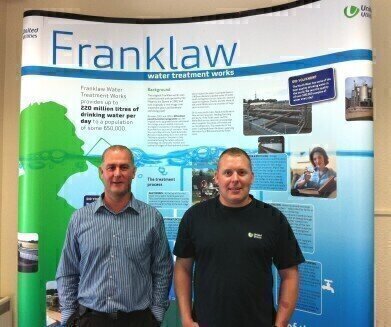Water/Wastewater
Maximum Uptime Realised Through in-line Turbidity at Franklaw WTW
Aug 29 2012
A key United Utilities water treatment facility has significantly reduced the risk of failure to comply with the regulatory requirements of the Badenoch Bouchier report and reduced the number of maintenance hours spent by installation of a continuous in-line turbidity probe. As an additional benefit advanced warning of desludging issues can be immediately identified enabling the plant operations to rectify the situation in minimal time.
United Utilities Group PLC forms the largest listed water business in the UK, controlling through its subsidiary United Utilities Water (UUW), the licence to provide water and wastewater services to 7 million customers in the North West region. Between the period 2010-2015, UUW is investing £300m improving treatment at 45 of their facilities promising the development of innovative operational solutions to optimise water treatment efficiency beyond the scope of existing processes.
Franklaw WTW based just outside Preston is a key treatment plant in the North West catchment area drawing raw water from various sources including the rivers Wyre and Lune, Fylde borehole, Barnacre reservoir and Thirlmere aqueduct. As a key facility, the plant supplies treated water to a population of 650,000 within Blackpool, Preston and the surrounding districts, providing up to 220 million litres of water per day (equating to a staggering 93,000 glasses of water per second). The years 2001-2004 saw £35 million investment by United Utilities to upgrade and develop the washwater treatment processing at the plant providing lamella based clarifiers for efficient washwater treatment.
North Lancashire Water Technical Officer James Bowsher (see photograph) explains the current treatment process at Franklaw WTW: “Treatment begins with water drawn from 4 inlet sources which are mixed and course-screened to remove large debris. The coloured raw water is dosed and mixed with Aluminium Sulphate and Polyelectrolyte. The coagulated waters then enter the upward flow super-pulsator units which hold the floc within baffle plates while the cleaner water flows upwards and on to the next processing stage. From here, clarified water enters one of 12 rapid gravity filters to trap any remaining particulates. Periodically these filters are automatically backwashed with air and then water to prevent blockage, and the backwash water passed to dirty backwash water tanks for blending and balancing. These waters then pass through a series of lamella clarifiers for further treatment.
Digital Edition
IET 34.2 March 2024
April 2024
Gas Detection - Biogas batch fermentation system for laboratory use with automatic gas analysis in real time Water/Wastewater - Upcycling sensors for sustainable nature management - Prist...
View all digital editions
Events
Apr 30 2024 Melbourne, Australia
Apr 30 2024 Birmingham, UK
May 03 2024 Seoul, South Korea
May 05 2024 Seville, Spain
May 06 2024 Minneapolis, MN, USA


















